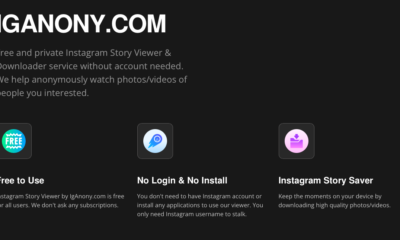News
Best Brake Line Material: Choose the Right One for Safety and Performance
Published
7 months agoon
By
Anderson
When it comes to your car’s safety and performance, brake lines play an essential role. Without reliable brake lines, your vehicle’s braking system could fail, leading to dangerous situations. This article explores the best brake line material options, their benefits, and how to choose the right one for your vehicle. Let’s dive into everything you need to know!
What Is the Best Brake Line Material?
The best brake line material depends on your needs, vehicle type, and driving conditions. Brake lines are the critical pathways through which brake fluid travels, transmitting the force from your foot on the pedal to the brake calipers. The material used for these lines determines their flexibility, durability, and overall performance.
Common materials for brake lines include rubber, stainless steel, and copper-nickel. Each has its strengths and drawbacks, but the ultimate goal is to ensure your vehicle has reliable braking in all situations. Choosing the right material involves balancing affordability, durability, and your car’s specific requirements.
Why Do Brake Lines Matter?
Brake lines are more than just a component of your braking system—they’re a lifeline for your car’s safety. These tubes carry pressurized brake fluid from the master cylinder to the brakes at each wheel. If a brake line fails, it can result in a loss of hydraulic pressure, rendering your brakes ineffective.
Well-maintained and high-quality brake lines ensure consistent braking power, which is crucial for both daily driving and emergency stops. Poor-quality or damaged brake lines can lead to brake fluid leaks, reduced braking efficiency, or even complete brake failure.
Top Brake Line Materials to Consider
When selecting brake line materials, it’s important to understand the pros and cons of each option. Below are the most common materials used for brake lines and their respective benefits:

Rubber Brake Lines: Affordable and Flexible
Rubber brake lines are the most commonly used type in factory-installed vehicles. Made from reinforced rubber, these lines are affordable, flexible, and easy to install. They work well for most everyday driving conditions and are a cost-effective solution for standard vehicles.
However, rubber brake lines are not the most durable option. Over time, they can crack, swell, or degrade due to exposure to heat, moisture, and road salt. For high-performance vehicles or extreme driving conditions, rubber lines may not be the best choice.
Stainless Steel Brake Lines: Long-lasting durability
Stainless steel brake lines are the go-to choice for enthusiasts and drivers looking for enhanced durability. These lines consist of a Teflon inner tube surrounded by a braided stainless steel sheath. This construction provides excellent protection against wear, corrosion, and abrasion.
In addition to their durability, stainless steel brake lines offer improved brake pedal feel and responsiveness. They resist expansion under pressure, ensuring consistent braking performance. However, they are more expensive than rubber lines and can be harder to install.
Copper-Nickel Brake Lines: The Best of Both Worlds
Copper-nickel brake lines strike a balance between affordability and durability. These lines are corrosion-resistant and easy to bend, making them a popular choice for mechanics and DIY enthusiasts. Copper-nickel brake lines are particularly suited for regions with harsh winters or high road salt usage, as they withstand corrosion better than other materials.
While they are slightly more expensive than rubber lines, their long lifespan and reliability make them a worthwhile investment for many drivers.
How to Choose the Best Brake Line for Your Car
Choosing the best brake line material requires evaluating your vehicle’s needs, driving conditions, and budget. Here are some factors to consider:
- Driving Conditions: If you frequently drive in extreme conditions, such as heavy rain, snow, or off-road terrains, consider stainless steel or copper-nickel lines for their durability.
- Vehicle Type: High-performance cars benefit from stainless steel brake lines due to their superior brake pedal feel and responsiveness. For daily drivers, rubber or copper-nickel lines may suffice.
- Budget: Rubber brake lines are the most affordable, while stainless steel and copper-nickel lines offer long-term value due to their durability.
- Ease of Installation: Copper-nickel lines are easier to bend and install compared to stainless steel lines, which require more precision and effort.
Signs Your Brake Lines Need Replacement
Knowing when to replace your brake lines can prevent accidents and costly repairs. Here are some common signs that your brake lines may need attention:
- Leaking Brake Fluid: If you notice a puddle of brake fluid under your car, it could indicate a damaged brake line.
- Spongy Brake Pedal: A soft or spongy brake pedal feel may result from brake fluid loss due to a leak.
- Corrosion or Rust: Visible rust or corrosion on your brake lines is a sign of wear and tear.
- Cracks or Bulges: Inspect your brake lines for cracks, bulges, or other physical damage.
- Warning Lights: If your car’s brake warning light is on, it may indicate an issue with your brake lines or hydraulic system.
Regular inspections and maintenance can help you identify these issues early and replace your brake lines before they fail.
How to Maintain Your Brake Lines
Proper maintenance can extend the lifespan of your brake lines and ensure consistent braking performance. Here’s how to keep your brake lines in top shape:

- Inspect Regularly: Check your brake lines for signs of wear, rust, or leaks during routine vehicle inspections.
- Flush Brake Fluid: Replace your brake fluid every 2–3 years to prevent moisture buildup, which can corrode brake lines.
- Clean the Undercarriage: Regularly wash the undercarriage of your vehicle, especially in winter, to remove road salt and prevent corrosion.
- Avoid Overloading: Excessive weight can put additional stress on your brake system, including the brake lines.
- Replace When Needed: Don’t wait for brake lines to fail—replace them at the first sign of damage or wear.
Which Brake Line Material Lasts the Longest?
Stainless steel brake lines are the most durable option, thanks to their resistance to corrosion, wear, and abrasion. Copper-nickel lines also have a long lifespan and are highly corrosion-resistant, making them a great alternative. Rubber lines, while affordable, typically have the shortest lifespan and may need replacement more frequently.
Are Rubber Brake Lines Safe?
Rubber brake lines are safe for most standard vehicles and everyday driving conditions. However, they are not the best choice for high-performance or extreme driving situations. If you prioritize durability and performance, consider upgrading to stainless steel or copper-nickel lines.
How Often Should I Replace My Brake Lines?
Brake line replacement intervals vary based on material, driving conditions, and maintenance. Rubber lines may last 5–10 years, while stainless steel and copper-nickel lines can last much longer with proper care. Regular inspections and timely maintenance are key to determining when replacement is necessary.
Pick the Best Brake Line Material for Your Needs
Ultimately, the best brake line material for your vehicle depends on your driving habits, budget, and the environment in which you drive. Rubber brake lines are a cost-effective option for standard vehicles, while stainless steel and copper-nickel lines offer superior durability and performance for demanding conditions.
Investing in high-quality brake lines not only improves your vehicle’s braking performance but also enhances safety for you and your passengers. Don’t compromise on this critical component of your car’s braking system.
The Bottom Line
Brake lines may not be the first thing you think of when it comes to car maintenance, but they are one of the most important safety components in your vehicle. Choosing the right brake line material—whether it’s rubber, stainless steel, or copper-nickel—can make all the difference in ensuring consistent and reliable braking performance.
Inspect your brake lines regularly, replace them when needed, and choose a material that meets your vehicle’s needs and your driving conditions. By doing so, you’ll keep your car safe on the road and enjoy peace of mind behind the wheel.
You may like
News
Will There Be a Straight Outta Compton 2? (Latest Updates Inside!)
Published
22 hours agoon
July 23, 2025By
Anderson
Straight Outta Compton” was more than a movie—it became a cultural phenomenon. Fans of N.W.A. and hip-hop history still talk about its raw, emotional storytelling, and now there’s one burning question: Will there be a Straight Outta Compton 2? Rumors, leaks, and fan theories are flying everywhere. Let’s break it all down, explore the possible sequel, and see what’s next for the N.W.A. legacy.
What Is Straight Outta Compton 2 About?
While Universal Pictures has yet to officially confirm Straight Outta Compton 2, there’s plenty of speculation about what a sequel could cover. Many fans believe it would explore the rise of West Coast rap beyond N.W.A., focusing on artists like Snoop Dogg, Tupac Shakur, and the Death Row Records era.
The first film ended around 1996, after Eazy-E’s death and Dr. Dre leaving Death Row. A sequel could pick up from there, showing the impact of Tupac’s life and tragic death, Snoop’s rise to stardom, and how Dr. Dre built his Aftermath label. This would give fans a deeper look into hip-hop’s golden era and show how the legacy of N.W.A. paved the way for the next generation.
Some rumors even suggest the sequel could include Dre’s later years with Eminem and 50 Cent, but others argue the focus should stay on the ’90s West Coast scene. Either way, Straight Outta Compton 2 has potential for a gripping story that combines music, fame, and real-life drama.
Is There a Release Date for Straight Outta Compton 2?
As of now, there is no official release date for Straight Outta Compton 2. Universal hasn’t made any announcements, but several interviews hint that a follow-up is not off the table. In past conversations, Ice Cube mentioned a possible sequel focusing on the “hip-hop family tree” after N.W.A., which could mean fans aren’t imagining things when they hope for part two.
If the film gets greenlit, we might expect a release as early as 2026, considering production timelines, casting, and the scale of such a project. But until official word arrives, all we can do is watch and wait.
Who Could Be in the Cast of Straight Outta Compton 2?
The first film’s cast delivered stunning performances, and a sequel would need both familiar faces and fresh talent to bring iconic figures to life again.
Will Dr. Dre Return?
Corey Hawkins’ portrayal of Dr. Dre won critical praise, and fans would likely want him back to continue Dre’s story—this time navigating his Death Row years and Aftermath success. Dr. Dre himself could also appear in cameo form or even advise on production like he did before.
New Faces for Tupac and Snoop Dogg?
Since Tupac was briefly portrayed by Marcc Rose in Straight Outta Compton, a larger role would require a talented actor to fully embody Pac’s complex character. As for Snoop Dogg, Lakeith Stanfield was rumored years ago but nothing was confirmed. Whoever takes on these roles would carry huge expectations from fans.
Cameos from Real-Life Rappers?
One exciting possibility is cameos from real-life hip-hop legends. Imagine Snoop, Dre, or even Eminem appearing briefly as older versions of themselves. Not only would this excite fans, but it would also strengthen the connection between the movie and the real people who lived the story.
What Are Fans Saying About Straight Outta Compton 2?
Social media is full of debates about Straight Outta Compton 2. Fans on Twitter and Reddit are asking if the story should continue or if the original should remain untouched. Many argue there’s “too much left unsaid” about Death Row Records and West Coast hip-hop’s evolution not to explore it on screen.
Memes and fan posters have already surfaced, showing how eager the hip-hop community is for part two. One Reddit thread even suggested splitting the sequel into two films to cover Tupac and Snoop’s stories separately. Whether these are wishful thoughts or predictions remains to be seen.
Will There Be a Trailer Soon?
With no official production announcement, a trailer is unlikely any time soon. But keep your eyes on Universal’s social media channels. If the sequel gets the green light, we might see a teaser in late 2025. Fans should also watch for leaks—remember, the original film’s trailer shocked everyone when it dropped unexpectedly.
Other Movies Like Straight Outta Compton 2
While waiting for updates on Straight Outta Compton 2, there are plenty of other films that capture the same energy and storytelling about music and culture.
Best Hip-Hop Biopics to Watch Now
- All Eyez on Me (Tupac’s story)
- Notorious (The Notorious B.I.G.’s life)
- 8 Mile (loosely based on Eminem’s rise)
- Get Rich or Die Tryin’ (50 Cent’s story)
Why Fans Love Music History Films
These films resonate because they mix powerful music with raw, emotional journeys. Fans love seeing how their favorite artists overcame struggles and changed culture forever. Biopics inspire not just music lovers but anyone chasing their dreams.
Thoughts on Straight Outta Compton 2
If Straight Outta Compton 2 follows this trend, it could become one of the greatest hip-hop films ever. It has the foundation, characters, and fan base needed to make a cultural impact again.
About Straight Outta Compton 2
Though unofficial for now, Straight Outta Compton 2 is shaping up to be one of the most talked-about potential sequels in years. It’s not just a movie idea—it’s a chance to honor a pivotal chapter in music history. Fans hope Universal Pictures and the original team return to bring this vision to life.
The Bottom Line
So, will there be a Straight Outta Compton 2? The answer is still unclear, but the demand is loud and growing. Whether it’s a sequel, spin-off, or even a limited series, one thing’s for sure: fans want more. The first film reminded the world how powerful hip-hop storytelling can be. A follow-up could elevate it further, giving a voice to the legends who defined a generation.
Until then, we’ll keep listening to the beats, revisiting the original, and hoping that Universal answers the call. Stay tuned for updates—you won’t want to miss them.
News
Oscar Mayer Turkey Bacon: A Tasty and Healthy Breakfast Choice
Published
22 hours agoon
July 23, 2025By
Anderson
If you’re searching for a delicious, healthier alternative to traditional bacon, Oscar Mayer Turkey Bacon could be the perfect option for you. Loved by families across the United States, it’s easy to cook, lower in fat, and still delivers that smoky, savory flavor bacon fans crave. But what exactly is it? Is it as healthy as it seems? And how can you make the most out of it in your meals? Let’s explore everything about Oscar Mayer Turkey Bacon in detail.
What Is Oscar Mayer Turkey Bacon?
Oscar Mayer Turkey Bacon is a smoked, cured turkey product designed to taste like traditional pork bacon but with significantly less fat and fewer calories. It’s made from chopped, formed turkey meat that’s seasoned and then smoked to give it a flavor very similar to regular bacon. Unlike traditional bacon strips that come from pork belly, turkey bacon uses leaner cuts of turkey, which is why it’s a favorite for health-conscious eaters.
This turkey bacon comes pre-cooked, meaning you can quickly heat it in a skillet, oven, or even the microwave in just minutes. It’s especially popular in the United States, where families enjoy it as a part of breakfasts, sandwiches, salads, and even as a snack.
Why Do People Love It?
There are many reasons why Oscar Mayer Turkey Bacon has become a staple in American kitchens. For one, it provides a guilt-free way to enjoy the smoky flavor of bacon without overloading on saturated fat. Its convenience is another major selling point. You don’t have to deal with splattering grease or long cook times like you would with regular bacon.
Additionally, turkey bacon has a versatility that makes it a favorite among busy parents and health-focused individuals alike. Whether it’s adding a crispy crunch to your BLT or wrapping it around asparagus for a quick appetizer, this product fits easily into countless recipes.
Is It Healthy to Eat Every Day?
This is one of the most common questions people ask: can I eat Oscar Mayer Turkey Bacon daily? The answer depends on your overall diet and health goals. Turkey bacon is lower in fat and calories compared to pork bacon, making it a better choice for those watching their weight or cholesterol levels. However, like most processed meats, it contains sodium and preservatives, which means moderation is key.:max_bytes(150000):strip_icc()/Oscar-Mayer-Bacon-Recall-FT-BLOG0725-5487d56caf754cff912e871fc609878f.jpg)
When eaten occasionally as part of a balanced diet, turkey bacon can be a tasty, protein-rich addition to your meals. If you’re relying on it daily, pair it with plenty of fresh fruits, vegetables, and whole grains to ensure you’re getting a wide range of nutrients.
Low Fat and Fewer Calories
One of the standout benefits of Oscar Mayer Turkey Bacon is its nutritional profile. With only about 35 calories per slice and 2.5 grams of fat, it’s an excellent swap for pork bacon, which often has over 80 calories and 7 grams of fat per slice. This makes it ideal for those following low-fat or calorie-restricted diets.
Good for Quick Meals
Since it’s already fully cooked, turkey bacon is perfect for busy mornings or last-minute meal prep. Just pop it in the microwave for 20–30 seconds, and it’s ready to enjoy. This convenience is one of the top reasons families prefer it over traditional bacon.
Great for Kids’ Lunchboxes
Parents love adding Oscar Mayer Turkey Bacon to their kids’ lunchboxes. It’s not greasy, doesn’t have a strong odor, and kids enjoy its mild, smoky flavor. Plus, you can roll it up with cheese or use it in wraps for a fun, protein-packed snack.
How to Cook Oscar Mayer Turkey Bacon
Cooking Oscar Mayer Turkey Bacon couldn’t be easier. Since it’s fully cooked, your goal is simply to heat it to your desired crispiness.
- Skillet: Heat a non-stick skillet over medium heat. Place bacon slices in a single layer and cook for about 4–6 minutes, turning occasionally until crisp.
- Microwave: Place 2 slices between paper towels on a microwave-safe plate. Heat on high for 20 seconds per slice. Add more time if you like it extra crispy.
- Oven: Preheat your oven to 400°F. Place slices on a baking sheet lined with parchment paper. Bake for about 8–10 minutes.
Best Ways to Eat Oscar Mayer Turkey Bacon
Turkey bacon isn’t just for breakfast. Its mild yet smoky flavor makes it versatile for all kinds of meals:
- BLTs: Replace pork bacon with turkey bacon for a healthier BLT sandwich.
- Salads: Chop crispy strips into bits and sprinkle over salads for extra crunch and flavor.
- Wraps and Rolls: Use turkey bacon to wrap around asparagus, chicken tenders, or jalapeño poppers.
- Egg Dishes: Pair it with scrambled eggs, omelets, or breakfast burritos.
- Snacks: Enjoy a few slices with apple wedges or cheese sticks for a satisfying snack.
Is Oscar Mayer Turkey Bacon Gluten-Free?
Yes, Oscar Mayer Turkey Bacon is gluten-free, making it a safe choice for individuals with celiac disease or gluten sensitivity. The product does not contain wheat, barley, or rye, and it’s processed in a way that avoids gluten contamination. Always check the packaging for the most current allergen information, but as of now, it’s considered a gluten-free food.
Also Free from Common Allergens
Besides being gluten-free, Oscar Mayer Turkey Bacon is also free from major allergens like nuts, dairy, and soy. This makes it an inclusive option for families with multiple dietary restrictions.
Where to Buy Oscar Mayer Turkey Bacon
Oscar Mayer Turkey Bacon is widely available in grocery stores across the United States, including Walmart, Target, Kroger, and Safeway. You can also purchase it online through retailers like Amazon Fresh and Instacart.
Quick and Easy to Cook
Another reason it’s so popular? Even beginner cooks can prepare it perfectly. No need for oil or butter since the slices are lean and won’t splatter like pork bacon.
Thoughts on Oscar Mayer Turkey Bacon
Oscar Mayer Turkey Bacon has earned its reputation as a healthier alternative to regular bacon. It’s tasty, versatile, and ideal for those looking to cut back on fat and calories without sacrificing flavor. While it’s not completely free of sodium or preservatives, eaten in moderation, it can be a smart addition to a balanced diet.
The Bottom Line
If you’re craving the taste of bacon but want a lighter, healthier option, Oscar Mayer Turkey Bacon is an excellent choice. It’s lower in fat and calories, gluten-free, kid-friendly, and incredibly easy to prepare. Whether you’re making breakfast, lunch, or dinner, this turkey bacon delivers on flavor and convenience. Just remember to enjoy it as part of a varied, nutrient-rich diet for the best health benefits.
News
Frederick K. C. Price Children: Meet the Family of the Famous Pastor
Published
22 hours agoon
July 23, 2025By
Anderson
Frederick K. C. Price, a name known to millions across the United States and beyond, left behind not just a legacy of faith but also a beautiful family who loved and supported him throughout his journey. Many people today are curious about Frederick K. C. Price’s children, wondering who they are, what they do, and whether they followed in their father’s footsteps. In this article, we’ll explore every detail about the late pastor’s children, offering insights into their lives, roles in the church, and personal stories.
Who Are Frederick K. C. Price’s Children?
Frederick K. C. Price and his beloved wife, Dr. Betty Price, were married for over 60 years, and during their marriage, they were blessed with two children: a son and a daughter. Their son is Frederick K. Price Jr., and their daughter is Angela Evans. Both children grew up deeply influenced by their father’s strong Christian faith, his dedication to ministry, and his passion for helping others.
While Pastor Price was often in the public eye because of his sermons and television broadcasts, his children mostly lived quieter lives. However, as we’ll see, their lives still reflect their father’s values and teachings in different ways.
How Many Kids Did Pastor Frederick K. C. Price Have?
Frederick K. C. Price and Betty Price had two children together. These two children—Frederick Jr. and Angela—formed the core of the Price family. Growing up in a household filled with faith and love, they were raised with strong Christian principles. Pastor Price and his wife were devoted parents who prioritized their family despite their busy schedules in ministry.
Meet Their Son – Frederick K. Price Jr.
Following in His Father’s Footsteps
Frederick K. Price Jr., often affectionately called “Fred Jr.,” has become a familiar name to many members of the Crenshaw Christian Center, the church founded by his father in Los Angeles. From a young age, Fred Jr. showed interest in ministry and leadership. Watching his father preach and guide thousands of people inspired him to walk the same path.
As an adult, Frederick Jr. took on greater responsibilities in the church. He was mentored directly by his father, learning not just the art of preaching but also how to lead with humility and integrity. Today, Fred Jr. is recognized for his heartfelt sermons and his ability to connect with younger generations, carrying forward his father’s mission of spreading the gospel.
Leading the Church Today
After Frederick K. C. Price Sr. retired, his son stepped into the role of senior pastor at Crenshaw Christian Center (CCC). This transition wasn’t always easy. Like his father, Fred Jr. faced challenges and criticism but continued to lead the church with passion and dedication. Under his leadership, CCC has grown even more diverse and inclusive, reaching new audiences both locally and globally.
His approach combines traditional teachings with modern methods, such as using social media and digital platforms to share sermons and church events. This has helped him engage younger churchgoers while still respecting the legacy his father built.
His Personal Life
Frederick K. Price Jr. is also a family man. He is married and has children of his own, which means the Price family legacy continues through yet another generation. While he tends to keep his private life out of the public spotlight, it’s clear that family remains a central part of his world, just as it was for his father.
Meet Their Daughter – Angela Evans
Angela Evans, the daughter of Frederick and Betty Price, chose a different path from her brother and father. While not as active in church leadership, Angela has remained a beloved member of the Price family and the Crenshaw Christian Center community.
Angela’s life has mostly been private, with limited public appearances or media coverage. However, people who know her describe her as a woman of strong faith and deep kindness. She has occasionally been seen at church events, supporting her brother and the family ministry. Like her mother, she is known for her warmth and generosity towards others.
Frederick K. C. Price’s Family Life
Frederick and Betty Price created a family environment filled with love, faith, and discipline. Despite the demands of leading a megachurch and running a nationwide TV ministry, Pastor Price never compromised on spending quality time with his wife and children. Family dinners, vacations, and attending their children’s milestones were all part of their lives.
This emphasis on family is something both Fred Jr. and Angela have carried into their own homes. The Prices valued education, community service, and spiritual growth, instilling these principles in their children from a young age.
Did Frederick K. C. Price’s Children Continue His Work?
Frederick Jr.’s Role in the Church
Yes, Frederick K. Price Jr. has directly continued his father’s work by serving as the senior pastor of Crenshaw Christian Center. His sermons often echo his father’s bold, Bible-based teaching style, but he has also brought fresh perspectives relevant to today’s world. Fred Jr. has become an influential voice in the Christian community, ensuring the church’s mission lives on.
Angela’s Life Outside the Spotlight
Unlike her brother, Angela Evans has not pursued a role in church leadership. She leads a more private life, and little information is publicly available about her career or personal projects. Still, her support for the family and church is evident in the few times she has appeared at major events. Angela’s life reminds us that contributing to a legacy doesn’t always require standing on a stage.
Facts About Frederick K. C. Price’s Kids
- Frederick K. Price Jr. was officially installed as CCC’s senior pastor in 2009.
- Both children grew up involved in church activities from a young age.
- Angela Evans is married and has children, but she avoids public attention.
- Fred Jr. has a reputation for being approachable and relatable to younger church members.
- The Price family remains one of the most respected families in American Christianity.
Thoughts on Frederick K. C. Price’s Children
Frederick K. C. Price’s children, Frederick Jr. and Angela, reflect two different ways of carrying forward their father’s legacy. While Fred Jr. leads the church into a new era, Angela provides support from behind the scenes. Together, they honor their parents’ decades of service and commitment to faith. Their lives show us that a strong family foundation can shape generations to come.
The Bottom Line
Frederick K. C. Price was not only a legendary pastor but also a devoted husband and father. His children—Frederick K. Price Jr. and Angela Evans—each play unique roles in upholding the family’s values. Fred Jr. continues to preach and lead, while Angela chooses a quieter life. Both, however, embody the teachings and principles instilled in them by their parents. As time goes on, the Price family legacy remains strong, inspiring countless people across the United States and the world.

Will There Be a Straight Outta Compton 2? (Latest Updates Inside!)

Oscar Mayer Turkey Bacon: A Tasty and Healthy Breakfast Choice

Frederick K. C. Price Children: Meet the Family of the Famous Pastor

TuGuiaUSA.com, Empleos y Oportunidades en USA

Camille Monfort, Shadows of the Crimson Moon

Breaking News: Tea Leoni and Tim Daly Announce Split
Trending
-

 Business7 months ago
Business7 months agoTuGuiaUSA.com, Empleos y Oportunidades en USA
-

 Life Style8 months ago
Life Style8 months agoCamille Monfort, Shadows of the Crimson Moon
-

 Life Style7 months ago
Life Style7 months agoBreaking News: Tea Leoni and Tim Daly Announce Split
-

 Games7 months ago
Games7 months agoUnlocking Access to Unblocked Games World at School
-

 Life Style8 months ago
Life Style8 months agoJulio Urias Wife: Inside His Life with Daisy
-

 Life Style7 months ago
Life Style7 months agoIgAnony: The Anonymous Instagram Story Viewer
-

 Education8 months ago
Education8 months agoTribute Printed Pics: A Special Way to Remember
-

 Life Style7 months ago
Life Style7 months agoMichael Ciminella: Biography, Age, Net Worth & Career Highlights

